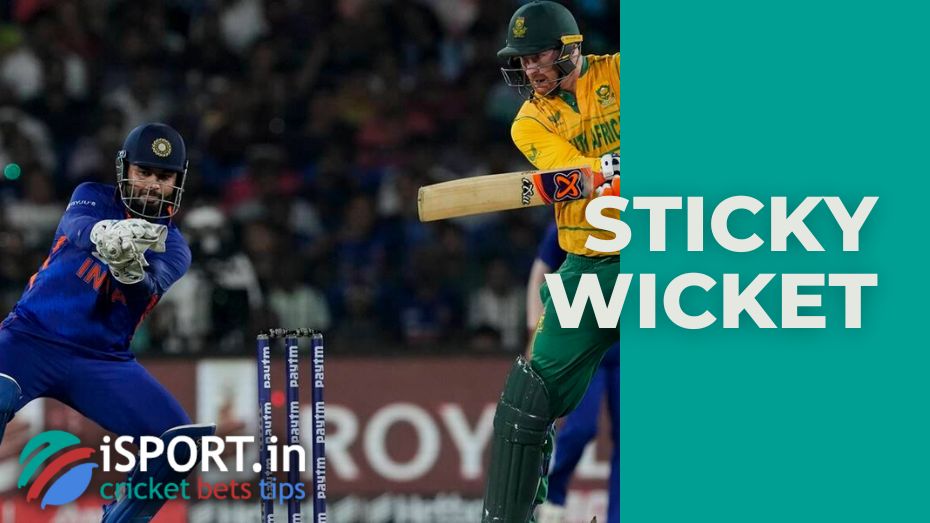Sticky wicket

If you decide to dive into the world of cricket with your head, you need to study the terminology of this game. The fact is that the rules of cricket are very complex; there is a proper name for any phenomenon. Moreover, some concepts that are used in everyday life in one meaning take a completely different meaning within the framework of a cricket match. One of the most famous examples is Sticky wicket. It is used in many English-speaking countries; you may even have heard of it. But as soon as a cricket commentator pronounces it – it takes on a slightly different meaning. In this article, we will analyze all the details.
Sticky wicket: explaining the meaning of a metaphor
Before moving on to the meaning of Sticky wicket in cricket, you need to understand how this term is used in everyday life. After all, the original meaning of this phrase will help you understand its meaning within the game.
A sticky wicket is a metaphor that is used to describe a difficult circumstance. At the same time, it came to everyday jargon from sports.
Sticky wicket has synonymous phrases that express the same thing –sticky dog and glue pot, but in the original version, it is used most often.
As an example, we will give you a few phrases where this term can be used in everyday life:
- He has no doubt realized that his party is on a sticky wicket.
- He was on a sticky wicket because the question of compensation in all its aspects is a very complicated and confusing subject.
But still, this expression refers more to sports, and then we will analyze in what situations it is used.
Sticky wicket: how this concept is used in cricket and croquet
As we have already said, the phrase “Sticky wicket” came from cricket. The term “wicket” in this sport has several meanings, but now we need only one: it refers to a rectangular area, also known as a pitch, in the center of the cricket field between the stumps. The wicket is usually covered with much shorter grass than the rest of the field, or the grass is completely absent. Because of this, the wicket is susceptible to weather changes that cause the ball to bounce in different ways.
If it rains and the wicket becomes wet, the ball can bounce completely unpredictably, which makes it much more difficult for the batsman to play. In addition, as the field dries, conditions can change quickly, especially if spin bowling is played against the batsman. Such a pitch can be destructive, as the ball can deviate laterally from the straight line by several feet. As soon as the moisture evaporates under the influence of the hot sun, the ball will rise sharply and randomly. A good length ball becomes a potentially dangerous delivery that is almost impossible for a batsman to hit. Such cases are called “Sticky wicket”.
Despite the apparent complexity and really “difficult circumstances”, some batsmen managed to gain fame as a player who is masterfully able to perform with “Sticky wicket”. One of them, for example, was Victor Trump from Australia.
Modern cricket matches are mostly held on indoor grounds, so the term “Sticky wicket” can be heard more often at amateur competitions.
In addition to cricket, the term Sticky wicket is also used in croquet. This phrase may refer to the hoop, through which the ball is difficult to pass due to the narrowness of the hole.
Now you know everything about this unusual term. We hope that with this information, watching cricket matches will become even more interesting for you.
You can bet on your favorite team with Sportsbetting promo code.
